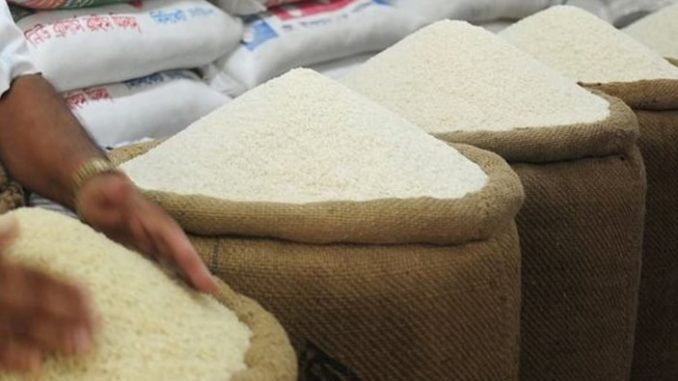
Indian rice prices remained unchanged from the previous week as demand remained subdued and supplies stayed on the higher side, while Thai rates fell pressured by a stronger baht amid weak demand.
Reuters, July 3, 2025
India’s 5% broken parboiled variety was quoted at $382-$387 per ton, unchanged from last week. Indian 5% broken white rice was priced in the $375 to $381 per ton range this week.
“Demand is still weak, (as) buyers are only making hand-to-mouth purchases because they know supplies are ample in exporting countries,” said a New Delhi-based trader with a global trade house.
India’s state reserves of rice, including unmilled paddy, totalled a record 59.5 million metric tons as of June 1, far exceeding the government’s target of 13.5 million tons for July 1.
Vietnam’s 5% broken rice was offered at $382 per metric ton on Thursday, slightly down from $383 a week ago, according to the Vietnam Food Association.
Asia rice: Prices in India edge up as demand improves; muted activity seen elsewhere
The association said Donald Trump’s announcement about a trade deal with Vietnam on Wednesday has no immediate impact on rice production and exports in the country in the short term.
“For the longer term, Vietnam’s move to open its market to American farm produce will encourage domestic rice producers to improve their quality and enhance their competitiveness,” the association chairman, Nguyen Ngoc Nam added.
Thailand’s 5% broken rice is quoted at $380 per tonne, down from $385 to $390 quoted last week.
“Prices have been dropping because of the strong baht while there has been very little demand,” a trader said.
The supply situation remained unchanged with traders expecting more supply to enter the market around August.
Meanwhile, despite good rice stocks in Bangladesh, domestic rice prices remain high, putting pressure on ordinary households already struggling with rising living costs.
Traders and market observers say that while there is no immediate shortage of stocks, factors such as supply chain inefficiencies, high production costs and market manipulation have kept prices high.
